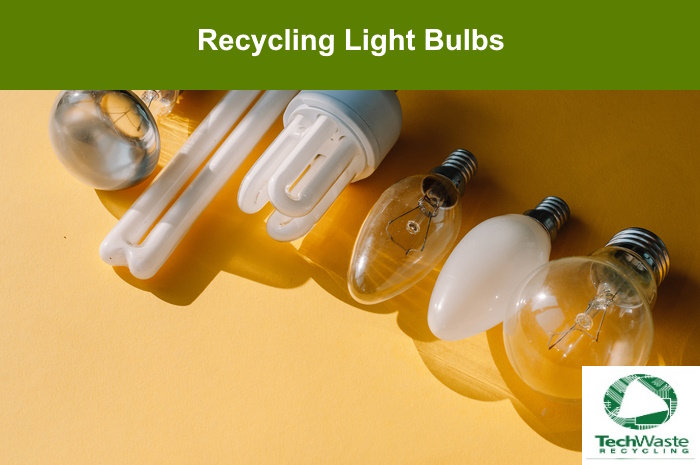Any kind of light bulb is recyclable, including those that contain trace amounts of mercury. Certain types of light bulbs must be recycled because, when discarded, they seep dangerous chemicals into the land and groundwater.
Recycling the Different Types of Light Bulbs
Each type of light bulb is recycled in a unique manner, and each state and municipality has distinct recycling rules and programs. While your curbside recycling program may accept LED light bulbs, it does not normally accept incandescent or compact fluorescent light (CFL) light bulbs that may contain dangerous chemicals. Numerous states offer recycling programs tailored to these products.
Incandescent Bulb
The filament of an incandescent light bulb is typically composed of tungsten, a metal with a high melting point, enclosed in a glass enclosure. Incandescent bulbs are challenging to recycle because they contain microscopic bits of metal and glass that are difficult to separate. Recycling incandescent light bulbs requires much energy so many recyclers refuse to take them.
Numerous recyclers refuse to take incandescent light bulbs which require much energy.
Halogen Light Bulbs
Although halogen light bulbs are primarily made of glass, you can’t put them in your glass recycling bin. Halogen light bulbs are made of quartz glass that melts at a different temperature than the bottles and jars in your bin. Putting a halogen light bulb in your glass recycling bin could actually ruin an entire batch of glass recyclables. Halogen lights, like incandescent bulbs, are hard to recycle due to their tiny wiring. Many localities advise that you dispose of halogen light bulbs rather than recycle them.
Compact Fluorescent Lamps
Compact Fluorescent Lamps (CFLs) are more energy-saving than other types of light bulb, however they are not necessarily eco-friendly. Compact Fluorescent Lamps contain mercury, which is harmful to humans and animals. Therefore, do not discard them in the garbage. Some localities even prohibit the disposal of fluorescent light bulbs, leaving recycling as the only option. The Environmental Protection Agency (EPA) recommends that people utilize local CFL recycling programs instead of disposing of them with household garbage. Recycling compact fluorescent light bulbs not only diverts waste from landfills, but also prevents the emission of mercury into the environment. Contact your local waste collection agency for information on local recycling options.
LED Light Bulbs
LED light bulbs, a high-efficiency lighting solution, emit light up to 90 percent more efficiently than incandescent bulbs. They are more efficient than CFLs. LED light bulbs are the best sustainable and environment bulbs on the market today due to their extended lifespan, lack of toxic chemicals, and exceptional energy efficiency. They are very recyclable, too.
What is the End Product of Recycled Light Bulbs?
During the recycling process, light bulbs are separated into several materials, including plastic, glass, metal, distilled phosphor powder, and elemental mercury, which are then utilized to create a variety of new products, such as worktops and additional light bulbs.
Can Light Bulbs be Recycled in Curbside Recycling bins?
Many curbside recycling programs accept LED light bulbs, but not incandescent or compact fluorescent light bulbs. These bulbs must be shipped to a facility with greater specialization. Check with your municipality to see if the municipal safety department will take them.
Which Light Bulbs Contain Toxic Waste?
Only compact fluorescent light bulbs and incandescent light bulbs are designated household hazardous waste (HHW) due to the presence of toxic compounds such as mercury and argan.
Why Mercury-Containing Lamps Are Dangerous?
Is it Unlawful to Dispose of Light Bulbs in the Garbage?
In the United States, it is allowed to dispose of light bulbs, but you should always recycle them to make use of the raw materials and reduce trash sent to landfills.
How to Reuse Light Bulbs?
Reusing something before throwing it away is always a good idea to save the Earth’s limited resources and cut down on waste. Light bulbs can be used for a lot of different things, especially if you are creative. Here are some ideas for how to use them again:
- Make a terrarium by putting soil and small plants in it.
- Put water in the bulb to make a vase.
- Put an air plant in it.
- Paint and use it as a holiday decoration.
- Make your own snow globe out of it.
Electronic recycling R2-certified companies, like TechWaste Recycling, may handle your e-waste disposal. Call them to schedule a pickup. see service areas we cover.


































